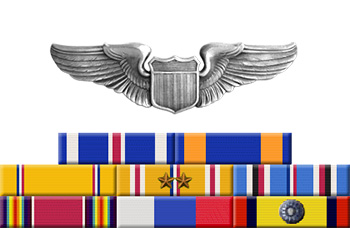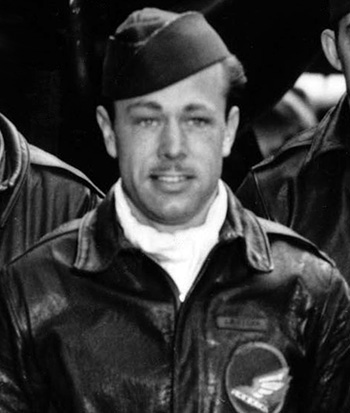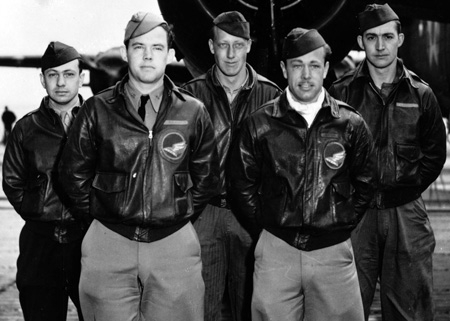
|
J. Royden Stork |
 |
|||
| Rank, Service | ||||
Captain, U.S. Army Air Forces |
||||
| Veteran of: | ||||
|
||||
| Tribute: | ||||
Royden Stork was born on December 11, 1916, in Frost, Minnesota. He enlisted in the Aviation Cadet Program of the U.S. Army Air Corps on May 15, 1940, and was commissioned a 2d Lt and awarded his pilot wings on July 12, 1941. His first assignment was as a B-25 pilot with the 89th Reconnaissance Squadron of the 17th Bomb Group at McChord Field, Washington, and at Pendleton Field, Oregon, from July 1941 until he was selected for the Doolittle Mission in February 1942. Lt Stork was the co-pilot on the 10th B-25 to take off from the aircraft carrier USS Hornet (CV-8) on April 18, 1942, and after bombing its assigned targets in Japan, the crew bailed out over China when their aircraft ran out of fuel. He remained in the China-Burma-India Theater after the raid, and served as a B-24 Liberator pilot until returning to the United States in August 1943. In the States, Capt Stork was assigned to Foreign Equipment Evaluation duties, as a ferry pilot with Air Transport Command, and with the 1504th Army Air Force Base Unit at Fairfield-Suisun Army Airfield, California, before leaving active duty on January 22, 1946. After leaving active duty he worked as a make-up artist in Hollywood for many years. Royden Stork died on May 2, 2002. |
||||
|
||||


